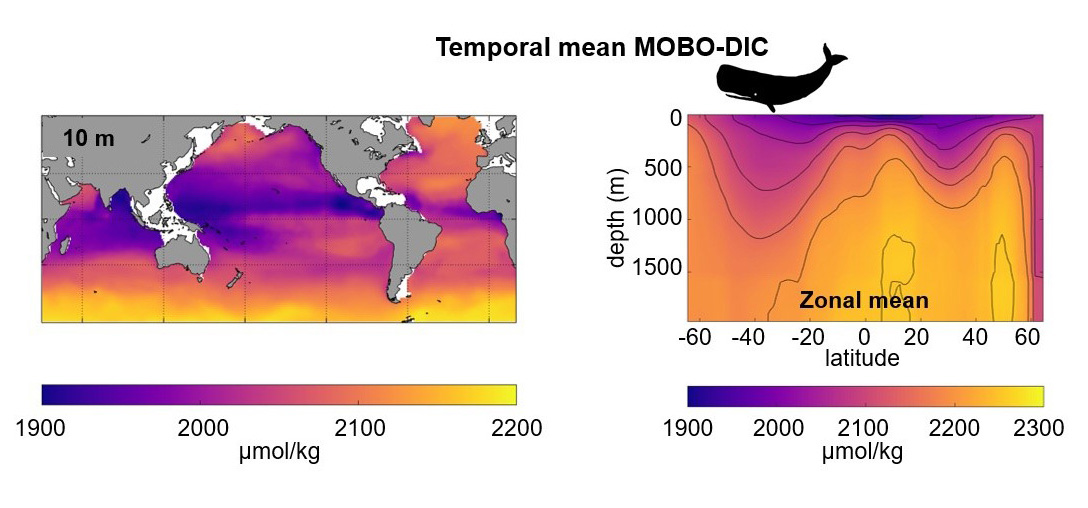
The natural carbon cycle varies substantially on seasonal time scales in the upper ocean. As a result of anthropogenic carbon dioxide emissions, changes in the seasonal DIC cycle have been suggested by theoretical studies and model predictions. These potential changes can exacerbate the impact of ocean acidification on marine organisms, for example, through an earlier onset of critical thresholds. Dr Lydia Keppler says “investigating the present seasonal cycle of DIC forms a crucial basis for investigating future changes in these patterns.”
However, DIC measurements are extremely sparse, rendering it impossible to produce global time-varying DIC fields using traditional statistical interpolation techniques. Therefore, the authors modified a machine learning approach to interpolate the sparse measurements with the aid of more frequently measured proxy data, such as temperature and salinity.
Using this new data product, the authors find the largest seasonal amplitudes in surface DIC in the northern high latitude Pacific. Surface DIC maxima tend to occur in hemispheric spring and minima in fall, driven by the input of DIC into the upper ocean by mixing during winter and the biological draw-down of DIC over summer. Based on the seasonal differences in DIC, the authors estimate the global biological draw-down of inorganic carbon between spring and fall to be 8.2±5.6 Pg C yr-1.
“This study illustrates the potential of neural networks and how they can help us to maximize the information provided by sparse observations”, says Dr Peter Landschützer.
Keppler, L., Landschützer, P., Gruber, N., Lauvset, S. K., & Stemmler, I. (2020). Seasonal Carbon Dynamics in the Near‐Global Ocean. Global Biogeochemical Cycles, 34, e2020GB006571. Accepted Author Manuscript. https://doi.org/10.1029/2020GB006571
https://www.ncei.noaa.gov/access/ocean-carbon-data-system/oceans/ndp_104/ndp104.html
Dr Lydia Keppler
Max Planck Institute for Meteorology
Email: lydia.keppler@mpimet.mpg.de
Dr Peter Landschützer
Max Planck Institute for Meteorology
Email: peter.landschuetzer@mpimet.mpg.de